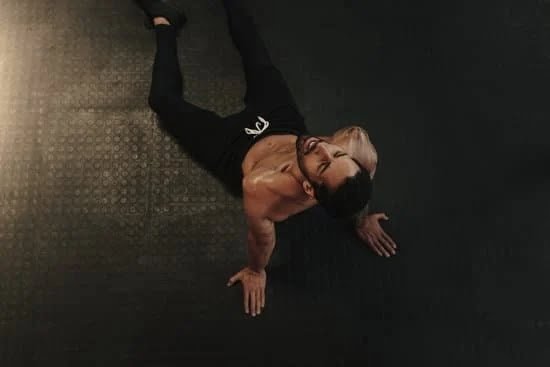Introduction
Group personal training is a form of exercise methodology where a personal trainer works with two or more clients simultaneously. This can be done in-person or virtually, and it generally involves the same type of consultation and coaching as traditional 1:1 personal training, but can provide additional benefits such as cost savings and an opportunity to train in a social setting. Some common types of group personal training sessions may include focused strength exercises, circuit training stations, HIIT workouts, and bootcamp-style class formats. Just like with traditional personal training, it’s important to discuss the goals each individual participant wishes to achieve prior to starting any type of session so that the trainer can tailor the program accordingly. Beyond that, equal attention should be given to each individual within the group to promote proper form and technique while providing encouragement from the group. Participants should also be used as motivators for one another by encouraging each other during workouts, swapping healthy recipes and tips for success outside of their workout routine, and celebrating each other’s accomplishments!
Advantages of Group Personal Training
Group personal training has a range of advantages, both for the trainer and the clients. Participating in group sessions can encourage people to stay motivated due to peer support and friendly competition. The trainers’ job is simplified as well since fewer individuals require supervision than in one-on-one personal training sessions. Furthermore, group sessions create an atmosphere of camaraderie within the group which helps build relationships between members, increasing their engagement and drive.
Group personal training sessions also offer cost benefits to clients since they are typically cheaper than individual sessions; costs are often shared among the members of the group or with corporate health packages. Moreover, it gives trainers an opportunity to learn more about each member’s goals and motivations and customize exercise programs accordingly so everyone benefits from the session. Finally, because each individual is accountable to the other members in the group, everyone is likely to show up regularly allowing fast results for all.
Equipment and Training Space Requirements
When training small groups, the right equipment and training space is essential. Depending on the type of group session, you may need weights, resistance bands, medicine balls, bosu balls, kettelbells, boxes and benches. For larger groups you will need two separate spaces; an exercise space to perform cardio and strength workouts, as well as a stretching area for cool downs. Make sure that these areas are well ventilated to ensure healthy air flow during physical activity. Storing all equipment neatly in one place also helps save time and keeps everyone organized.
Safety should always be top priority when providing personal training for small groups. Having a first-aid kit available at all times ensures proper treatment in the event someone is injured or experiences any medical issues during class. You should also have liability waivers available for participants to sign prior to the start of the session acknowledging that they understand the risks associated with physical activity and what types of exercises they’ll be performing. Making sure your workouts are age-appropriate and including proper instruction throughout each exercise are important considerations for maintaining safety among your clients as well. Finally, staggering rest times can minimize over crowding or overcrowding within your workout area which prevents injury from occurring too quickly during high intensity intervals and keeps classes running more smoothly overall.
Developing an Effective Training Plan
Training small groups presents unique challenges to personal trainers. Developing a successful plan for such a group calls for specific knowledge and skill, as well as some creative problem-solving. Here are a few tips to help you create an effective program when you’re working with a small group of clients:
1. Make sure everyone is on the same page: Before starting any training, establish shared goals and expectations that all members of the small group agree upon. This will ensure that each person is motivated by the discipline and knows what they are working towards, creating a healthier level of accountability between all members.
2. Assess individual needs: Even though it’s important to have overall assessment goals for the entire group, it’s essential to monitor individual progress too. Pay careful attention to each client’s independant strengths, weaknesses as well as their bodies in order to create customized plans tailored to them individually.
3. Adapt exercises: If there are major physical or ability differences among your small group clients, adapt your exercises accordingly — this way nobody gets left behind or overextends themselves during a workout session. Consider bodyweight and equipment variations whenever possible so everyone can take part in activities at their individual levels.
4. Incorporate team building activities: Making sure all participants feel safe and supported is key when training any kind of group; ask members of your class to come up with positive affirmations for each other or find ways to incorporate team games into your sessions in order to foster stronger relationships within the group dynamic and increase unity among members!
Creating Engaging Sessions
Personal training small groups can be a great way to motivate clients, keep them motivated and help them reach their health and fitness goals. When personal training small groups, it is important to create engaging sessions that challenge each client as an individual while still providing a team element. To ensure that each session is successful and beneficial, here are some tips for how to personal train small groups:
1. Establish Clear Goals: Before you start a session, create objectives with the group that clearly communicate what targets they should strive to achieve during the class. These objectives should be tailored to meet their individual needs while also benefiting the entire group.
2. Focus on Proper Form: In order to get the most out of a workout and minimize the potential for injury, make sure different exercises are performed correctly. Review each exercise before you begin so everyone can remember proper form or provide detailed demonstrations to ensure everyone has the correct technique down-pat before continuing.
3. Vary The Workouts: Training sessions need not consist solely of weightlifting or cardiovascular workouts; give your clients variety by incorporating poses, balance exercises and other exercises that involve multiple body parts at once. This will activate multiple muscle groups which will help tone and strengthen muscles more quickly and effectively while keeping participants engaged in their workout regimens.
4. Keep Class Intimate: Given that you are dealing with a smaller group it may me tempting to add people into the mix if there is an open space on your gym floor but always make sure whatever participant’s you have in class have similar ability levels or else someone might end up feeling overwhelmed or left behind by other members of the group working out too strenuously for them—which will take away from the team atmosphere you are trying foster as well as hinder progress towards obtaining an optimal outcome from your sessions..
Utilizing Games and Activities
Personal training in small groups can be an enjoyable and rewarding experience for both trainer and participants. When working with multiple people, it is important to take the time to plan unique activities that will keep everyone engaged. Incorporating team-building exercises, competitive games, and cooperative adventures can add excitement and challenge for group members as well as provide a creative change of pace from traditional exercise activities.
Team-building exercises are always a great option for small group personal training since they promote camaraderie and cooperation among participants. Examples include passing an exercise ball around in a circle while music plays or having each person take his/her turn leading a five-minute routine involving strength or cardio drills while the other teammates observe and follow along. Group games such as “Four Corners” can also be modified to fit specific exercise goals; rather than standing in “corners” participants can do push-ups, squats, or planks while new exercises are called out every few seconds by the trainer.
Incorporating cooperative adventures into small group personal training might include activities like scavenger hunts or obstacle courses utilizing multiple bodyweight exercises such as burpees, mountain climbers, box jumps and jumping lunges as markers along the way. The end result should reward teams with a prize upon completion for all their hard work. Finally, don’t forget about friendly competition; races between teams can be held over short distances involving running, swimming, cycling, skipping—you name it!
Sample Workouts for Small Groups
Small group training is a great way to engage a few people at once and challenge them in unique ways. Here are some sample workouts you can use to help personal train small groups:
1. HIIT Circuit Training – With high-intensity interval training, or HIIT, you can create an effective workout for small groups by splitting them into teams of three or four. Set up stations around the room with various bodyweight exercises and have each team race against the clock to complete their rounds first. If mobility allows, have each individual go to different stations for extra variety.
2. Partner Training Drills – Depending on the size of your group, partner workouts can be a fun way for them to work together as a team and challenge each other’s strength and endurance levels. Focus on whole body movements such as squats, burpees, mountain climbers and planks and allow members of the group take turns motivating their partner through each exercise set.
3. Tabata Intervals – These short bursts of intensive exercise make for an intense full-body session that can be modified for almost any level – just modify reps and weight used for each routine (if using). Choose four exercises that target different muscle groups so your client gets an overall workout in a short amount of time—for example squats, pushups, lunges and crunches. Have them complete 20 seconds of an exercise followed by a 10-second rest before moving on to the next one.
These are just a few sample exercises to get you started when creating workouts for small groups. Remember to tailor sessions based on individual needs while still focusing on providing a dynamic experience that will keep participants engaged and motivated!
Strategies for Enhancing Group Engagement
Training small groups can be a great way to get multiple people motivated and engaged in their workouts. When training groups, it’s important to ensure that everyone is participating and pushing themselves to their limits. The following strategies can be used to enhance group engagement:
1. Encourage friendly competition: Utilizing a sense of friendly competition among the group creates a healthy atmosphere of motivation and achievement. Setting up challenges among the members can help them stay competitive with each other, encouraging better performance from each individual.
2. Get creative with breaks: Rather than downplaying the importance of breaks during a workout, use them as an opportunity for engagement. Participate in games or activities centered around fitness with your group during these short respites from the intense exercises. This will refocus their energy and help keep them motivated throughout the session.
3. Offer modifications/scaling options: Every member of a group may have different abilities when it comes to working out—offering scaling or modification options allows members to still participate without feeling hindered or overmatched by other members. Making sure there are tailored exercises for everyone in attendance is key to running an equitable and successful session!
4. Make it fun!: Incorporating elements of fun into your sessions helps keep the mood light, allowing everyone to relax and enjoy themselves more during challenging movements and drills. By making it enjoyable, you can not only motivate your group members but also create a lasting culture of positivity that will make future workouts far more engaging and productive for all participants involved!
Motivating Clients to Achieve Goals
When you are personal training small groups, it is important to develop a motivational approach to help clients achieve their goals. One method you can use is goal setting. Clearly communicate your expectations before starting any session and have the group develop measurable, actionable goals. You should clearly explain what they need to accomplish in each session and define the timeframe they have to do so.
Encouraging regular check-ins with clients also helps keep everyone motivated towards their goals. After setting specific goals at the start of each session, make sure that everyone has completed everything they need for the week, such as completing certain exercises or recording nutritional logs. Checking in keeps your clients accountable and can provide valuable insight into any successes or concerning developments throughout their journey.
Finally, recognize and reward accomplishments from your clients throughout the entire process. Create incentives for the group independent of their physical success, like rewarding them with gift cards or special treats for hitting exercise milestones together. Celebrating victories as a team encourages high morale within the group and can motivate individuals further on their fitness journey. Following these practices will ensure that small group personal training sessions are of higher quality and lead to greater success for all members involved.
Wrapping Up
Group personal training offers many benefits to both trainer and client. For trainers, the main benefit is financial. Charging a lower rate per person can make training small groups more profitable than working with one-on-one clients. Group training also requires less time to train each client, yielding more time for other tasks or projects. Finally, group training produces a sense of camaraderie among participants that can be beneficial to the atmosphere in the gym.
For clients, there are also benefits of group personal training. Firstly, it is typically cheaper than private sessions and therefore more accessible for those on a budget. This could be especially useful for individuals who are just beginning on their fitness journey; getting started often presents financial barriers that can make progress difficult if not addressed upfront. Additionally, exercising with others creates an environment of friendly competition and support beneficial for encouraging everyone’s progress through physical activity. Finally, the presence of trained professionals guide participants throughout the workout giving directions and correcting mistakes to insure proper technique and form is used throughout their fitness journey

Passionate about providing useful information to anyone with an interest in the field of Personal Training, I strive to pass on to our readers quality information and to answer any questions about Personal Trainers, the work they do and how to become one.





